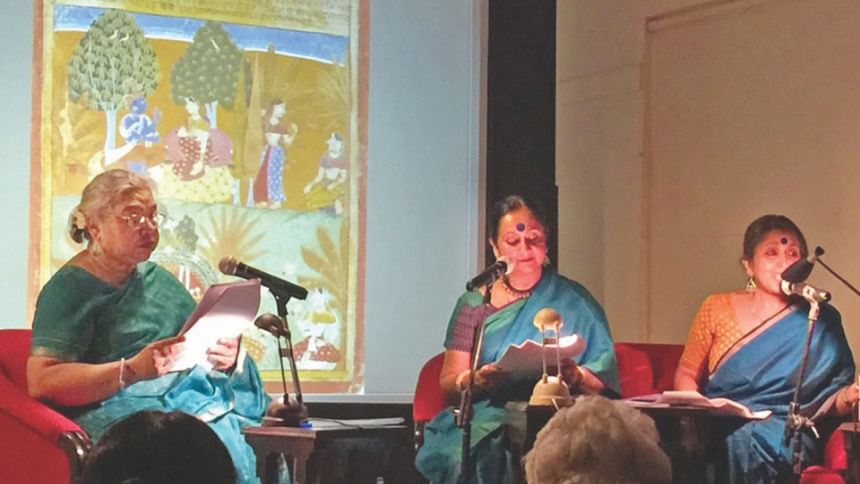The Tagore women

Tomes and tomes have been written about Rabindranath Tagore. In contrast, little has been uncovered about his illustrious extended family, particularly the secluded yet strong Tagore women, the delight of a researcher or writer. Dr. Aruna Chakravarti takes on both persona for her novel “Jorasanko”, that she describes as docu-fiction. “A lot of the book stems from my imagination but the major events are based on facts,” she says.
Chakravarti has spun “Jorasanko” into a stunning multi-media presentation titled “Two Women: Jnanada and Kadambari”. Music, visuals and play reading form links in the chain to describe the close yet turbulent relationship between strong-willed, independent Jnanadanandini Debi and gentle, depressive Kadambari Debi whose life ended in tragedy.
Spanning a course of about 25 years, “Two Women” sets off in 1859 when seven-year-old (Genu) Jnanadanandini steps into Jorasanko, the family home of the Tagores, as the bride of Satyendranath Tagore, the second son of Debendranath Tagore. Her humble origins belie her strength. Described by Chakravarti as “the first modern woman of Bengal and India”, Jnanadanandini went on to reinvent the style of wearing a sari that is followed by Indian women even today. The first Tagore woman to leave Jorasanko to join her husband, the first Indian officer in the Indian Civil Service, she initiated the concept of the nuclear family. She had other firsts too: she was the first Bengali woman to attend the governor general's party, that too without her husband who was unwell. She also travelled alone to England with her three small children to set up a home for her husband.
Kadambari, by contrast is gentle and melancholic. With her fine poetic sensibility she is her brother-in-law Rabindranath's muse. The play reading ends with Kadambari's suicide in 1884, an event that has aroused much speculation.
The dramatised reading is presented by Minoti Chatterjee and Averee Chaurey. Meanwhile Jayati Ghosh brings up the musical interludes in a combination of Rabindra Sangeet, folk songs, thumri and semi-classical strains. Sharmila Bakshi collates and presents images of the Tagore mansion and family, paintings by Rabindranath and his contemporaries, plus other related visual material. The play is produced and scripted by Chakravarti.

 For all latest news, follow The Daily Star's Google News channel.
For all latest news, follow The Daily Star's Google News channel. 



Comments